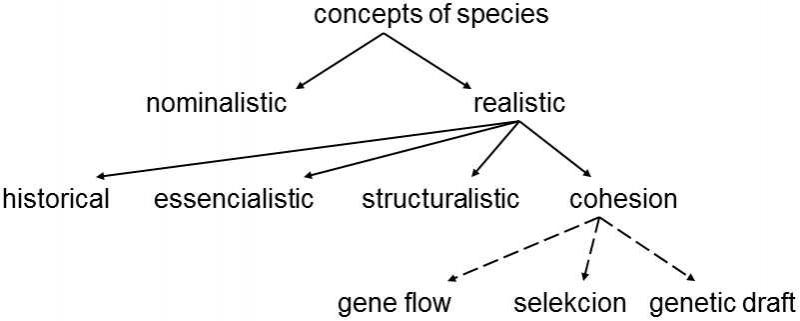XX.2 There are several, principally different, theoretical concepts of species
Although most biologists probably agree that species exist in nature, there is no such agreement in opinions on why they exist or how the category of species can actually be generally defined and how the individual species can be mutually differentiated.If an attempt were to be made to reasonably differentiate the individual potential or existing theoretical concepts of species, we would probably first have to define a basic group of questions, to which the proponents of the individual concepts of species would give different answers.The first question that must be answered is whether species exist objectively in nature, independent of human beings, or whether they are mutually differentiated only by humans – taxonomists.The realistic concept of a species prefers the former, while the nominalistic concept of a species prefers the latter option.
If species do actually exist objectively in nature independent of humans, then another question must be posed: whether the existence of distinct species necessarily follows from the properties of living systems or from the properties of the environment in which they live, or whether their existence is only a consequence of a historical accident (see below).
The third question that must be posed is whether the reasons for the existence of distinct species are internal, i.e. whether they follow directly from the properties of the internal elements of living systems, or whether they are caused by external circumstances, i.e. properties in their surroundings, their environment.The first possibility is preferred by structuralists andessentialists, while the latter option is preferred by proponents of most theories of species cohesion.Fig. XX.1 depicts one of the possible divisions of various concepts of species.

Fig. XX.1 Basic classification of the individual conceptions of species. The cohesive concept assumes that the mutual distinctness of the individual species and the similarities of their members are maintained by an external mechanism. The three most frequently considered mechanisms are designated in the scheme and discussed in the text.
